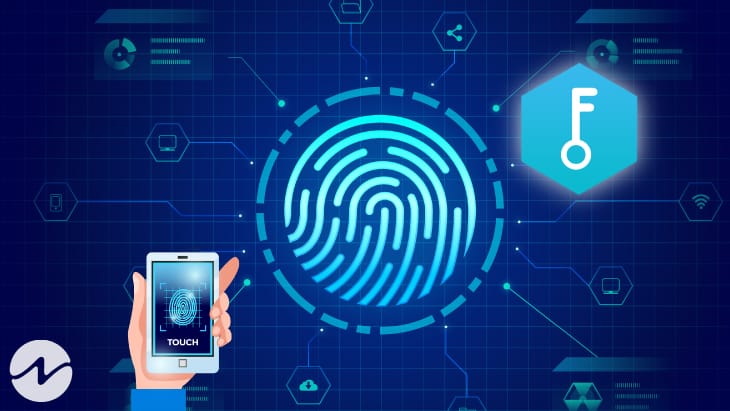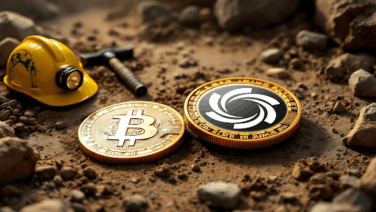The non-fungible token (NFT) market has witnessed explosive growth over the past year or so. According to DAppRadar, the NFT ecosystem saw a rapid rise in Q3 2021 as sales volume surged past $10 billion, representing over 1000% increase in the past year alone. Additionally, the largest NFT marketplace OpenSea has witnessed a surge in monthly sales, recording a total of $2.81 billion in October.
However, with explosive growth in any nascent market, you expect fraud and theft to grow as well. The NFT market has not been spared with scammers and frauds entering the market just as explosively as the growth of sales. The increasing rise in scams and fraud calls for NFT projects to deploy extra security measures to protect genuine collectors and creators. All the same, verification modules of NFTs remain stretched thin creating a gap on determining which NFT is real.
SelfKey, a blockchain-based identity project, aims to ease verification of NFTs for the purposes of protecting the digital identity rights of individuals with a self-sovereign approach. Launched in 2017, the platform leverages a proof-of-identity (POI) consensus to ensure NFT owners and collectors can prove the legitimacy of their digital asset.
Nonetheless, SelfKey is not the only verification platform for NFTs and digital assets. Recently, Twitter announced the launch of its NFT authenticator that lets users verify and authenticate the ownership of NFTs they put on their profile pictures with a special badge.
Introducing the SelfKey POI Paper.https://t.co/fXrQnwhze8 pic.twitter.com/yuEdhNU7RW
— SelfKey (@SelfKey) November 8, 2021
Twitter Introduces NFT Verification and Authentication
Over the past year, NFT assets have gone mainstream with scientists, billionaires, celebrities and athletes from all corners of the globe starting to showcase their digital possessions. From Mark Zuckerberg and Snoop Dogg owning a CryptoPunk to Stephen Curry’s Bored Ape Yacht Club NFT, the NFT metaverse is welcoming new participants and shows it is here to stay.
Notwithstanding, a multitude of Twitter users are also changing their profile pictures in favor of NFT art. As time passes, profile pictures based on NFTs are quickly becoming the “new blue checkmark” of Twitter but there’s still a huge issue with verification of NFTs. As such, Twitter announced its plans to start verifying and authenticating NFTs by letting users connect their crypto wallets and then mark the legitimate NFTs with a special badge.
So Why Do We Need Verification of NFTS?
NFTs are rapidly changing the way we view art and entertainment but in equal measure, fraud and scams are also finding their way into the market. Other issues affecting NFTs include copyright rules, document storage, forgery issues, high carbon footprint, high taxes and ownership defaults.
For example, it is easy to identify Steph Curry’s or Mark Zuckerberg’s NFT as their own because it would be hard for them to duplicate or use someone else’s NFT on their profile picture. Additionally, these ‘celebrities’ are already verified on various social media platforms which makes it easy for them to identify with their NFTs. However, not everyone has the luxury of owning and verifying their own NFT without someone else squatting on the highly paid JPEG.
While Twitter’s solution is set to reduce the overall counterfeiting of NFTs on its platform, there remains pertinent issues. Current governance systems are vulnerable and offer unfair advantage to some individuals. This defeats the purpose of decentralization, any voting mechanisms and makes the process centralized.
Decentralized verification systems could also offer an unfair advantage through the voting structures currently implemented. DApps often assign voting power equal to the number of tokens a voter holds. This grants more power to users with wealth and is a direct contradiction of the principles of decentralization. Such governance systems offer an unfair advantage to the whales (large holders) on the network.
Here’s where fair and fully decentralized verification is needed. SelfKey leverages blockchain technology to allow anybody to verify their NFT in a decentralized fashion showing everyone that the NFT actually belongs to you.
New ‘Proof-Of-Individuality’ Concept
To avoid the challenges current verification models use, SelfKey introduces ‘Proof of Humanity/Proof of Individuality’ (POI) to ensure that voting on DApps and verification of NFTs is fully decentralized. Simply put, the proof of individuality is a method by which a user can join the dApp only one time by proving their individuality, and those who attempt to join multiple times could be detected and stopped.
Applying this to NFTs means that each NFT will be assigned to one person at all times. If you own an NFT, the SelfKey system will mark the NFT with your proof of individuality – authenticating and verifying that the NFT belongs to you. This prevents Sybil attacks and enables better governance of the platform.
The POI system starts from a simple design that requires the NFT holder to take a selfie to provide proof to the system. The selfie will be checked automatically via machine learning algorithms and once accepted, the user is issued a temporary credential. Users will need to stake KEY tokens as collateral to finalize their credentials.
Unlike other verification systems, SelfKey allows users with a valid credential to earn directly from the platform’s “games”. Any interested user with a valid POI credential and stake can play the game, the gamer will check the uniqueness of selfies uploaded on the POI system. To do this, the gamer would essentially view selfies of random users on the system to check whether the selfies match. All the users who work to correctly identify a selfie as non-unique, which leads to the eventual invalidation of a user’s POI credential from the system, will earn a proportion of the stake that was held against the invalidated credential. This incentivizes the users to check for the validity of a selfie which improves the authentication process on the system.
Once the validity of the selfie and staking is complete, users can verify their digital assets including NFTs using their credentials and authenticate their documents, files, art, music.
Blockchain as the Future of Digital Verification
As the world moves towards digitization, blockchain technology will have a big role to play in securing digital verification and identity. In the future, all of the information about our real estate, financial, and healthcare information, in one unified place such that we can easily verify true identity to a past transaction.
Solutions such as SelfKey aim to decentralized the verification process by incentivizing the network participants. This will help maintain validated proof-of-identity ensuring that the records of ownership are legitimate and true. This will minimize the cases of fraudulent documents and transactions and secures identity information as the world inevitably advances towards a digital future.
Recommended for You








